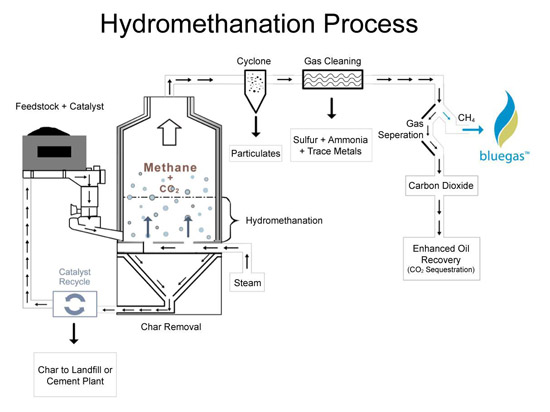For those of us at Warm Home Cool Planet old enough to remember the last energy crisis, the current talk about Clean Coal, and Coal Gasification feels like deja vu, all over again.
Coal-to-liquids technology isn’t new— according to the WSJ the process was developed in Weimar Germany in the 1920s. South Africa used the technology to escape sanctions during the Apartheid era. Today, coal-rich, oil-poor China is hot for coal-to-liquids.
Closer to home, Cambridge-based Great Point’s coal gasification process, which includes carbon sequestering (not simply for sake of carbon sequesting of course, but for use in enhanced oil recovery) looks pretty good on paper. Depending on how much biomass is used as a feedstock, Great Point claims that its Bluegas technology can actually be net carbon negative.

The real question is will federal regulators, who during the Bush Administration relaxed clean-air standards to allow Coal plants to postpone cleaning up emissions, actually make utilities spend the additional money required to do what is theoretically possible to reduce the damage done by using coal?
Clean(er) Coal costs more than dirty coal. Does the political will exist to enforce cleaner technologies which will cause rate-payers to pay more for electricity? Obama has said he’s open to the idea of clean coal technology. At this point in time, however, the only thing ‘clean’ about it is the carbon sequestering the industry is obliged to do under state and federal regulations. As more facts indicate the true costs and effects of making ‘clean coal’ a widespread production mandate for our energy needs, political opinions will be sharpened and sides taken.
As the price of oil falls, interest in goofing around with coal, shale, and tar-sands will most likely wane, just as it did in the 70s. Greatpoint’s technology began life back when the Disco was King. Will we all be wearing silver unitards and popping food pills before pilot efforts turn into wide-scale deployment?
